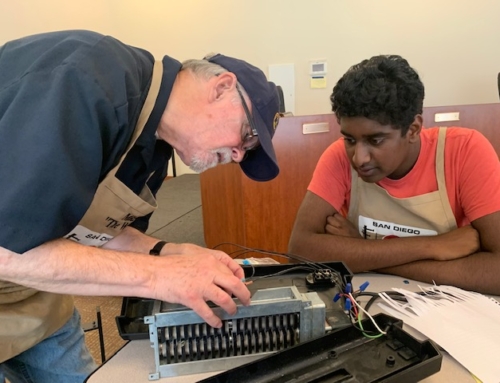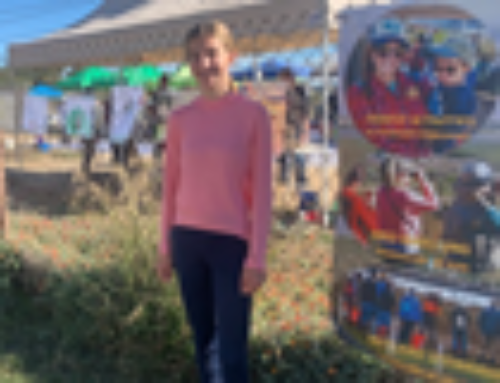Thank you to the 30 attendees who joined us on Saturday August 5, 2017 at the Cabrillo National Monument for our special Ranger-led Climate Walk hosted by ecologist  Alexandria “Alex” Warneke. Alex is also the Science Outreach Coordinator for the Cabrillo National Monument and is an active leader with the Climate Science Alliance – South Coast, where she guides the innovative community outreach programs.
Alexandria “Alex” Warneke. Alex is also the Science Outreach Coordinator for the Cabrillo National Monument and is an active leader with the Climate Science Alliance – South Coast, where she guides the innovative community outreach programs.
Alex shared her first-hand insights about climate change impacts on the biodiverse 160 acres that make up Cabrillo National Monument. She explained about the important native plant species, and the animals that depend on these natural habitats. She challenged our group to think  about: what happens when these plants experience drought? How about the mammals and reptiles that live in this habitat: considering the area is isolated (surrounded by water on three sides and a Navy base on the other) where can they go if they can’t find enough food or water? How about slow moving and vulnerable marine life: will they be able to adapt quickly enough to the changing ocean temperatures, sea level rise or acidification?
about: what happens when these plants experience drought? How about the mammals and reptiles that live in this habitat: considering the area is isolated (surrounded by water on three sides and a Navy base on the other) where can they go if they can’t find enough food or water? How about slow moving and vulnerable marine life: will they be able to adapt quickly enough to the changing ocean temperatures, sea level rise or acidification?
Among the many important animals here, there are foxes, bats, lizards, birds and diverse marine life. There are two pairs of nesting peregrine falcons and recently four chicks were born. A success story: after being gone from the park for a hundred years, the local California Gnat Catcher made a comeback just three years ago. Did you know, there are five biologists on staff at Cabrillo National Monument?
Alex and her team at Cabrillo also monitor and protect the rocky intertidal zone commonly known as the tide pools. Cabrillo is a great place to spot migrating grey whales or view California sea lions. There is a NPS monitoring station, tracking ocean pH levels and water temperatures. Alex shared with the group the impacts that our oceans will experience from climate change, discussing sea level rise and ocean acidification. Tip: if you want to visit the tide pools, plan your trip in the winter when the daytime tides can be low enough (-.7’) for viewing.
 Thank you to Alex for her dedication to climate change science and for her unique ability to explain complex concepts in a simple, non-scary way all while making it fun for the kids. Click here to learn more about the Cabrillo Education Climate Kids program that teaches school children about ocean acidification. Questions for Alex? She can be reached at Alexandria_warneke@nps.gov.
Thank you to Alex for her dedication to climate change science and for her unique ability to explain complex concepts in a simple, non-scary way all while making it fun for the kids. Click here to learn more about the Cabrillo Education Climate Kids program that teaches school children about ocean acidification. Questions for Alex? She can be reached at Alexandria_warneke@nps.gov.



